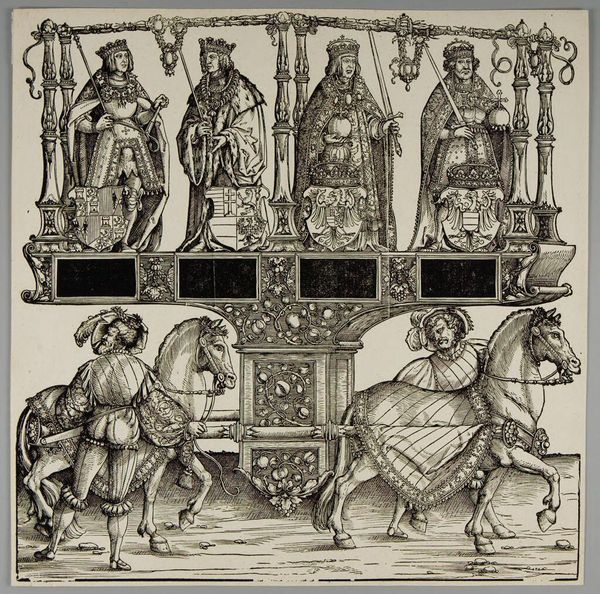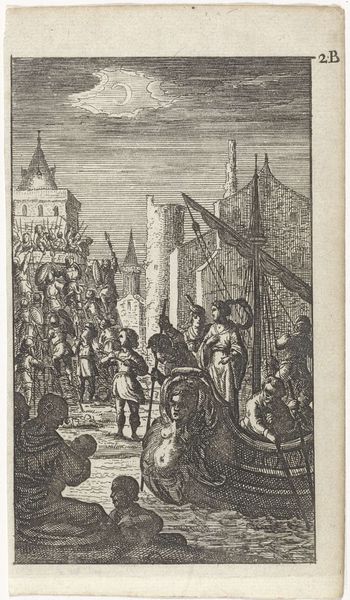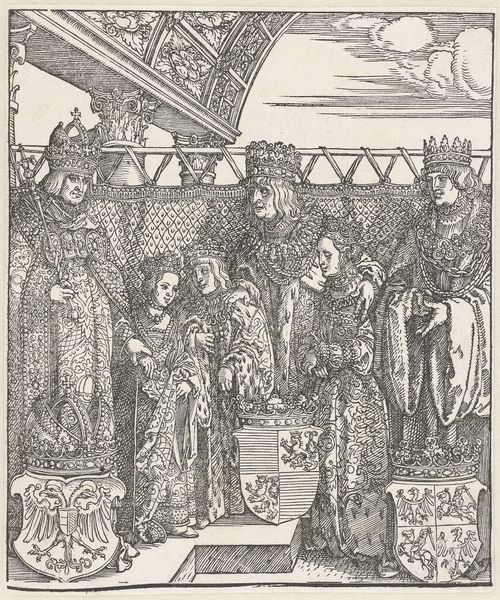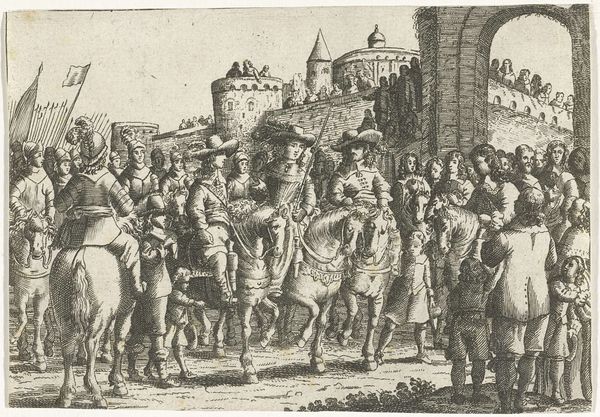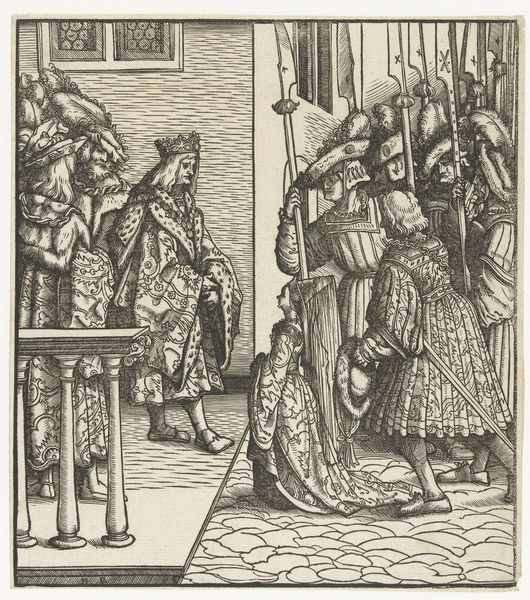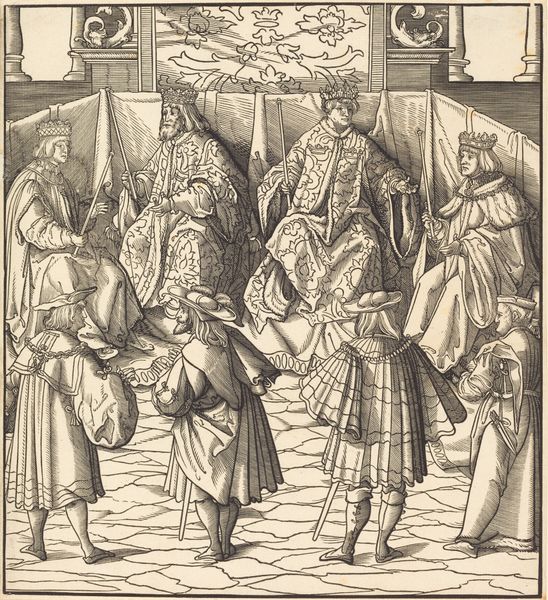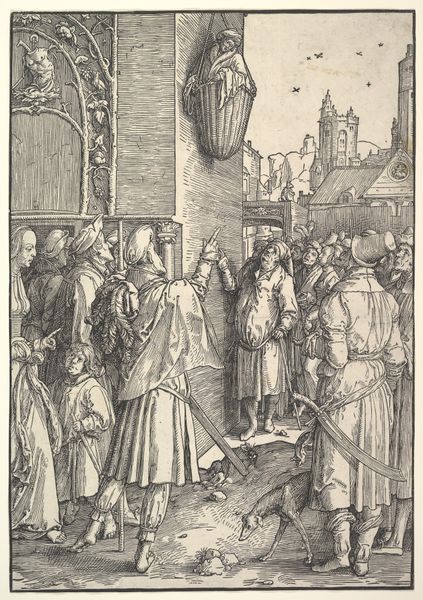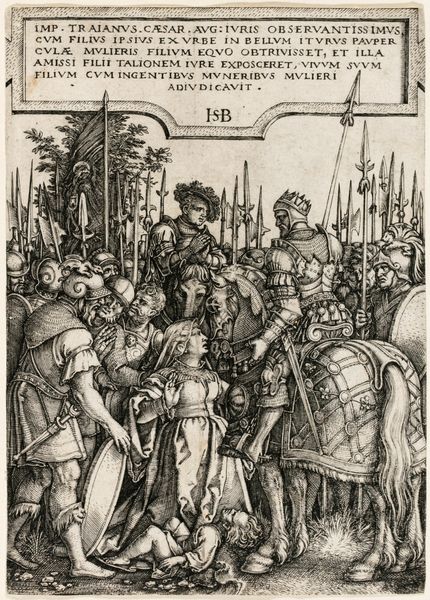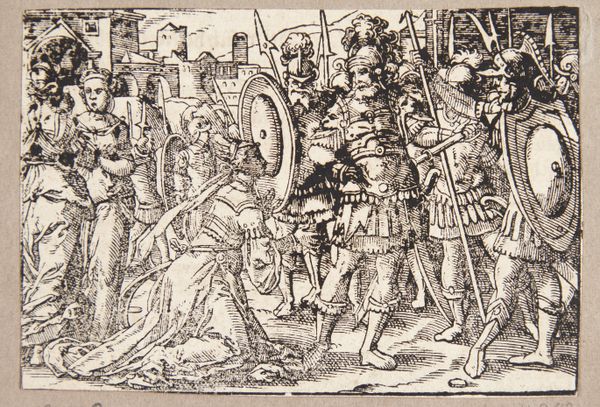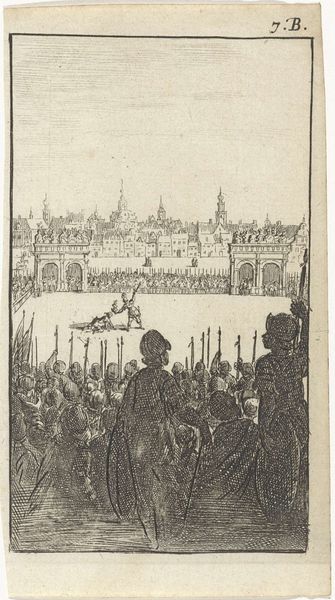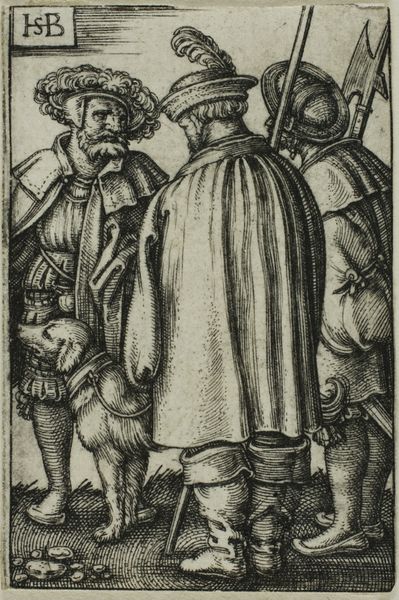
The Arrival of Charles V (1337-80) in Paris, 28th May 1364 1460
0:00
0:00
jeanfouquet
Bibliothèque nationale de France (BnF), Paris, France
tempera, painting
#
medieval
#
narrative-art
#
tempera
#
painting
#
oil painting
#
history-painting
#
international-gothic
#
portrait art
#
miniature
Copyright: Public domain
Editor: This is "The Arrival of Charles V in Paris, 28th May 1364" by Jean Fouquet, made around 1460 using tempera. It’s incredible how detailed everything is for such an old painting! The way the buildings crowd the horizon… what are your thoughts, looking at this? Curator: My eye immediately goes to the repetition of symbols: the fleur-de-lis on the king's robes, adorning the flags, echoing the power of the French monarchy. Observe how Fouquet uses gold leaf not just for ornamentation, but as a signifier of the sacred, elevating the event beyond mere historical record. Do you notice anything intriguing about how space is used to communicate meaning? Editor: I see how everyone's crammed together, as though depth isn't important...It feels almost staged, like a tapestry rather than a real place. Is that intentional? Curator: Precisely! Think of illuminated manuscripts: flattened perspective directs focus to symbols and narrative. It echoes how medieval audiences understood power, divinity, order – presented rather than realistically depicted. Notice also, beyond the grand procession, tiny figures on the city gate - are they biblical? Or historical figures that establish context and lend symbolic weight to the King's arrival? Editor: They could be biblical figures. It really does make the arrival of Charles V seem like some kind of sacred event. Almost...ordained. Curator: It reminds us that medieval art wasn’t just about representation, but about conveying profound cultural and psychological meanings, tapping into collective memory. The miniature details demand we look closer, meditate, and recall this chapter of history in relation to larger societal and even divine frameworks. Editor: It's fascinating how the imagery really underscores how history, power, and religious belief were intertwined! Curator: Yes, and by examining the symbolic vocabulary, we can more fully grasp the cultural landscape of 15th-century France.
Comments
No comments
Be the first to comment and join the conversation on the ultimate creative platform.
